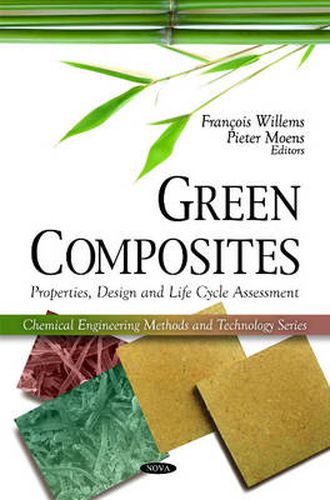Readings Newsletter
Become a Readings Member to make your shopping experience even easier.
Sign in or sign up for free!
You’re not far away from qualifying for FREE standard shipping within Australia
You’ve qualified for FREE standard shipping within Australia
The cart is loading…






Green composites can be prepared by conventional blending wheat gluten (WG) and other organic or inorganic components using conventional plastic processing equipments followed by thermo-moulding of the mixture at elevated temperatures to crosslinking the matrix. In recent years, great attention has been dedicated to the exploitation of natural fibres as reinforcement for plastics, replacing fibres synthetic materials. This book examines the methods for surface modification, which can be physical or chemical, according to superficial modification approach of the fibre. This book also gives a survey about the chemical composition, various mechanical processes for the separation of flax fibre, mechanical properties, physical and chemical treatment methods that improve the flax fibre matrix adhesion, their results and special effects on the various properties of composites. The authors also investigated the preparation and characterisation of Mater-Bi/wood flour green composites. The investigation was completed by performing biodegradation tests which allowed assessing the actual biodegradability of the prepared green composites. Other chapters in this book examine the effects of accelerated exposure to seawater on the flexural and impact properties of composites. Densified wood, which can be effectively used as raw material in the production of wood-base green composites, is discussed as well.
$9.00 standard shipping within Australia
FREE standard shipping within Australia for orders over $100.00
Express & International shipping calculated at checkout
Green composites can be prepared by conventional blending wheat gluten (WG) and other organic or inorganic components using conventional plastic processing equipments followed by thermo-moulding of the mixture at elevated temperatures to crosslinking the matrix. In recent years, great attention has been dedicated to the exploitation of natural fibres as reinforcement for plastics, replacing fibres synthetic materials. This book examines the methods for surface modification, which can be physical or chemical, according to superficial modification approach of the fibre. This book also gives a survey about the chemical composition, various mechanical processes for the separation of flax fibre, mechanical properties, physical and chemical treatment methods that improve the flax fibre matrix adhesion, their results and special effects on the various properties of composites. The authors also investigated the preparation and characterisation of Mater-Bi/wood flour green composites. The investigation was completed by performing biodegradation tests which allowed assessing the actual biodegradability of the prepared green composites. Other chapters in this book examine the effects of accelerated exposure to seawater on the flexural and impact properties of composites. Densified wood, which can be effectively used as raw material in the production of wood-base green composites, is discussed as well.